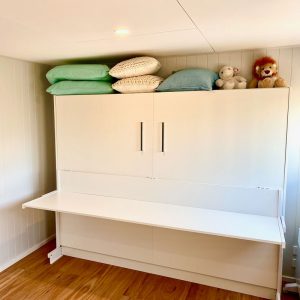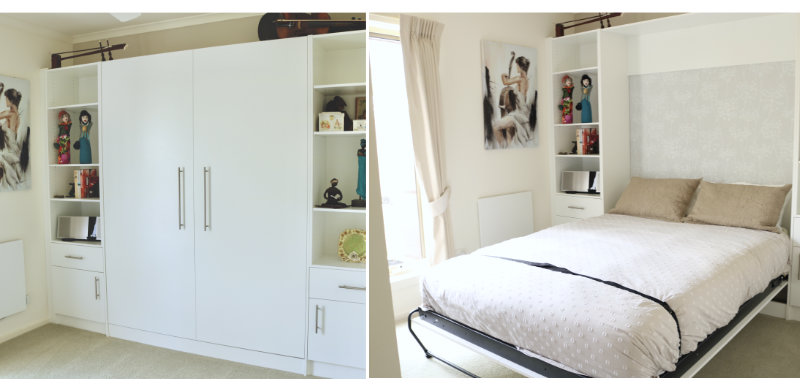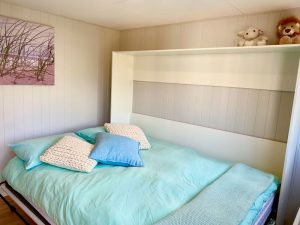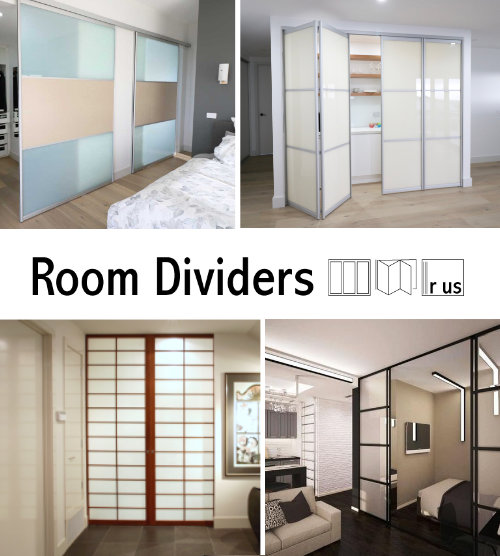When it comes to optimising space in your home, wall beds, also known as Murphy beds, are a versatile and functional choice. They not only save valuable floor space but can also be a core element in the design of a room. One important consideration when selecting a wall bed is whether to choose a horizontal or vertical orientation. We’ll explore the unique features and factors to consider when deciding between these two options.
Factors to Consider When Choosing Any Wall Bed
Room Size:
The size of your room is a crucial factor when deciding between horizontal and vertical wall beds. In smaller spaces, a horizontal bed might be the better choice as it maximises floor space. In larger rooms, a vertical bed can be accommodated more comfortably without overwhelming the space.
Room Function:
Consider how you want to use the room. If it’s a bedroom that will only occasionally serve as a guest room, a horizontal wall bed can save space for other activities. However, if it’s a dedicated guest room or a multi-functional space, a vertical wall bed may be more suitable, as it allows for easier access to other parts of the room.
Layout:
Think about the room’s layout and other furniture you plan to incorporate. A horizontal wall bed works well with furniture placed along the walls, allowing for a more open central space. A vertical wall bed may require more thoughtful furniture arrangement since the bed extends into the room when in use.
Cabinetry and Additional Features:
Consider your storage and workspace needs. Do you require shelves, a day desk, or additional cabinetry? Wall beds can be designed to include these features, making them a multifunctional solution. The design can range from a single cabinet unit to a comprehensive wall-filling system, depending on your preferences.
Bed Size:
Determine the size of the bed you need, whether it’s a single, double, queen or king. Your choice should align with the room’s purpose and the number of occupants you expect to accommodate.
Both horizontal and vertical wall beds offer unique advantages and can be tailored to your specific needs and room dimensions. By carefully considering your room size, intended function, layout, additional features, and bed size, you can make an informed decision that transforms your space into a functional and stylish environment. Whether you’re looking to optimise a small studio apartment or create a versatile guest room, wall beds provide a space-saving solution that combines form and function.
Understanding the Difference: Horizontal vs. Vertical Wall Beds
Horizontal Wall Beds:
Horizontal wall beds are designed to flip up to the wall on their side, along the length of the bed. When lowered, the bed extends horizontally and typically takes up less floor space and more wall space. This orientation can be an excellent choice when space is at a premium, and you want to maximize the use of your room’s vertical space.
Measurement Chart for Horizontal Wall Beds:
Single: 1187mm high x 2028mm wide
Double: 1567mm high x 2028mm wide
Queen: 1721mm high x 2155mm wide

Vertical Wall Beds:
Vertical wall beds, on the other hand, flip up on the wall from the bed head, with the bed extending downward. When in use, the bed occupies the center of the room, with the full length of the bed taking up floor space. This orientation may be a better fit for larger rooms or spaces where the available wall area is limited.
Measurement Chart for Vertical Wall Beds:
Single: 2087mm high x 1123mm wide
Double: 2087mm high x 1505mm wide
Queen: 2215mm high x 1658mm wide




